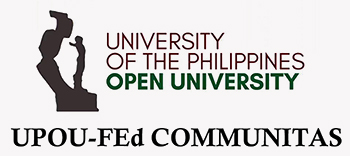Literature Reviews for Research
These are critical reviews that require critical arguments. Before anything else, it is notable to remember that these reviews must position the research problem as a gap in the current literature. To ensure that all the gathered data are relevant and fit together, the generated argument ought to demonstrate how all the literature relates to the main research project. Literature reviews provide relevant insights and background information to understand the problem; thus, they also cover the definitions of key terms and the discussion of theories, ideas, and texts. The focus of literature reviews needs to be on the argument that we present.
Literature Search: Relevance, Recency, Importance, and Reliability
Dr. Eacersall highly suggests that researchers consult librarians to know the in-depths of the literature search. However, in his talk, he tried to briefly discuss four key texts in finding pertinent studies. The following measures can be considered:
Relevance to your topic. Assessing literature by its title and abstract can greatly help the researcher to find its relevance to the research project.
Importance to the field. Dr. Eacersall pointed out that in finding related articles, not only the relevance to the research topic is important but also they must have significance to the field in general. The more citations the better.
Recency. The rule of thumb is to look for articles published within the last 5 years, however, old citations that provide foundational information might still be necessary.
Reliability. Dr. Eacersall said high citation rate does not always equate to high reliability, so it is necessary to dig deep on the content and surrounding arguments around a specific article.
Organizing the Literature to Shape the Arguments
In this segment, Dr. Eacersall differentiated the definitions of analysis and synthesis – explaining that these two words differ but they need to work together. Analysis involves systematically breaking down the literature whereas synthesis is making connections between parts that are identified in the analysis. Between analysis and synthesis, Dr. Eacersall pointed out the importance of having a balanced perspective in order to demonstrate the impacts of the research project into the overall field.
- 1. Identify relevant, recent, and reliable sources. Quickly identify which articles are the most relevant, then delve deeper only on these literature to save time.
- 2. Provide a broad overview of the literature. Since researchers will be dealing with many literature at a time, capturing the broad picture of the literature helps to fast track shaping the arguments.
- 3. Identify relevant arguments. It is notable to remember that we can use the Excel Spreadsheet tool to identify the arguments, not to perfectly map the literature.
- 4. Begin to synthesize arguments. Excel Spreadsheet is a useful device to manage, sort out, and filter gathered articles. During this part, Dr. Eacersall demonstrated how he utilizes the tool by sharing the collected literature in his personal research.

Writing the Review
The first part of the writing process involves proper structuring of ideas – what ought to be included in the introductory part, body, and concluding paragraphs. For the introduction, Dr. Eacersall notes that it is of utmost necessary to highlight the main research problem and the argument right at the beginning. This is where background information and key concepts are elaborated, so the readers will have a grasp of what the research is all about. Next, writing the body of the literature review is presenting organized evidence to support the main argument. For this part, the speaker mentioned some organizational approaches such as chronological, which contains historical research onto more recent findings; geographical, arranged from global onto local relevance; and general onto specific approach. Finally, a literature review provides a brief conclusion wherein main arguments are restated and key points are summarized. The conclusion needs to emphasize how the implications of the arguments will address the gap or the research problem in the field.

Towards ending the session, Dr. Eacersall shared practical strategies that helped him write effective literature reviews. Aside from excel spreadsheet, he also mainly utilizes Microsoft Word on structuring and organizing data. He particularly stresses the advantage of having a system that ensures — (1) traceable referencing and (2) the separation of original ideas from quotes. Dr. Eacersall clearly underscores that writing a literature review is an explorative and iterative process that involves critically discussing the literature, not just presenting them.
Written by Jen Javier
